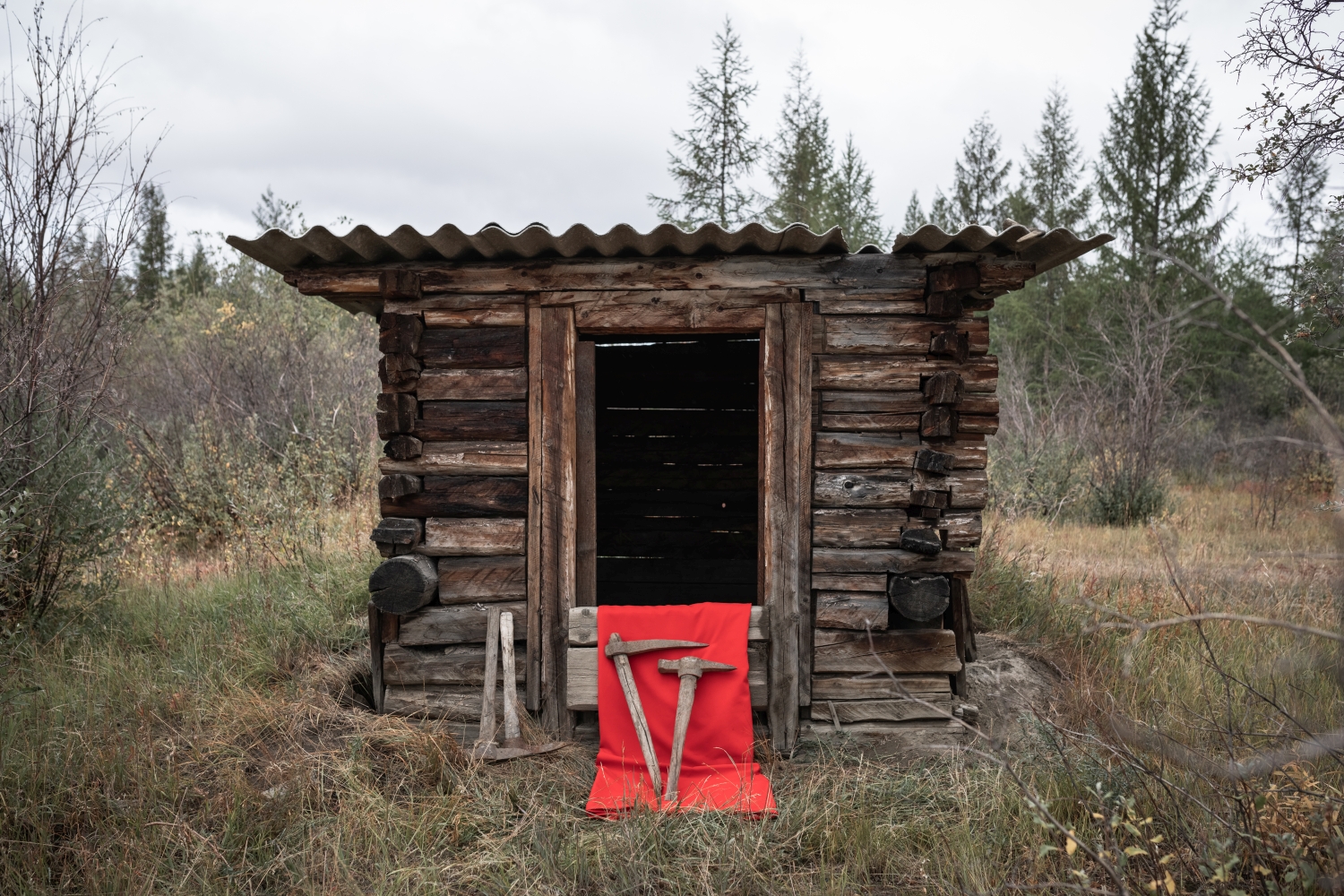
In June 2014, the former office of the SEWER cooperative burned down in the village of Batagai. The archive of the Ege-Khaya mine and the YanLag was kept in the rooms. The YanLag was a Soviet prisoner and labor camp, which was operated by the Soviet state until 1953. Prisoners were forced to mine tin, set up processing plants and perform logistical tasks there – in one of the coldest places in the world. Despite the use of the prisoners, the operation was uneconomical, which is why the GuLAG was finally closed in 1956. The Ege-Khaya mine continued to operate thereafter until 1973. Thousands of personnel files of former prisoners and civilians, were kept in the archive. The fire destroyed a large part of the documents, and thus important testimonies.
In 2020, Russian photographer Evgeniya Zhulanova was in the region on a research trip. Staff from the village museum asked her to look at the old files stored in cardboard boxes. The photographer later reflected that it was sometimes difficult for her to understand what was happening in this place. There are almost no sources and information about YanLag on the Internet. The people who mined tin for the USSR under inhumane conditions kept their experiences to themselves. For a long time, the experiences were not allowed to be discussed publicly. Many of the contemporary witnesses are no longer alive. Some of their descendants still live in the region. Local people with Polish and Baltic surnames give an idea of this. The files with the biographies are one of the last opportunities to get a blurred picture of the people, to feel their pain, which is so closely connected with this place, and to guess some of their hopes. A selection of documents was translated into English especially for this exhibition.
Evgeniya Zhulanova uses a red cloth as a connecting element between the close-ups of files and personal fragments and the landscape shots. It serves as a contrasting background for the artifacts from the village of Batagai. The bright red also appears repeatedly in the vast landscapes. A symbol of violence and despotism of the USSR rulers, death and frostbite. A reminder of the deceased and survivors of this GuLAG. A reminder not to simply relegate the fates of more than 18 million people imprisoned in GuLAGs to the heap of history.
A digital addition to the exhibition of the Galerie nEUROPA
Photographs: Evgeniya Zhulanova
Translations: Elena Pagel
Curation: Elena Pagel
Digital realization: Simon Wolf
Texts: Evgeniya Zhulanova, Elena Pagel, Simon Wolf
Editing: Felicitas Wenzel
MEMORIAL
Dealing with the memory of Stalinist terror and with state injustice is still difficult in Russia today. The human rights organization ‘MEMORIAL‘ was founded by Nobel Peace Prize winner Andrei Sakharov during perestroika. Its goal to this day is to anchor the history of the GuLAGs in the public historical consciousness and to give the victims a face. In November 2021, the Russian Prosecutor’s Office requested the dissolution of the internationally recognized organization. The ban on MEMORIAL would bring the process of coming to terms with the past in Russia to a virtual standstill. Representatives from politics and civil society in many countries have therefore been protesting strongly against the application since it became known.


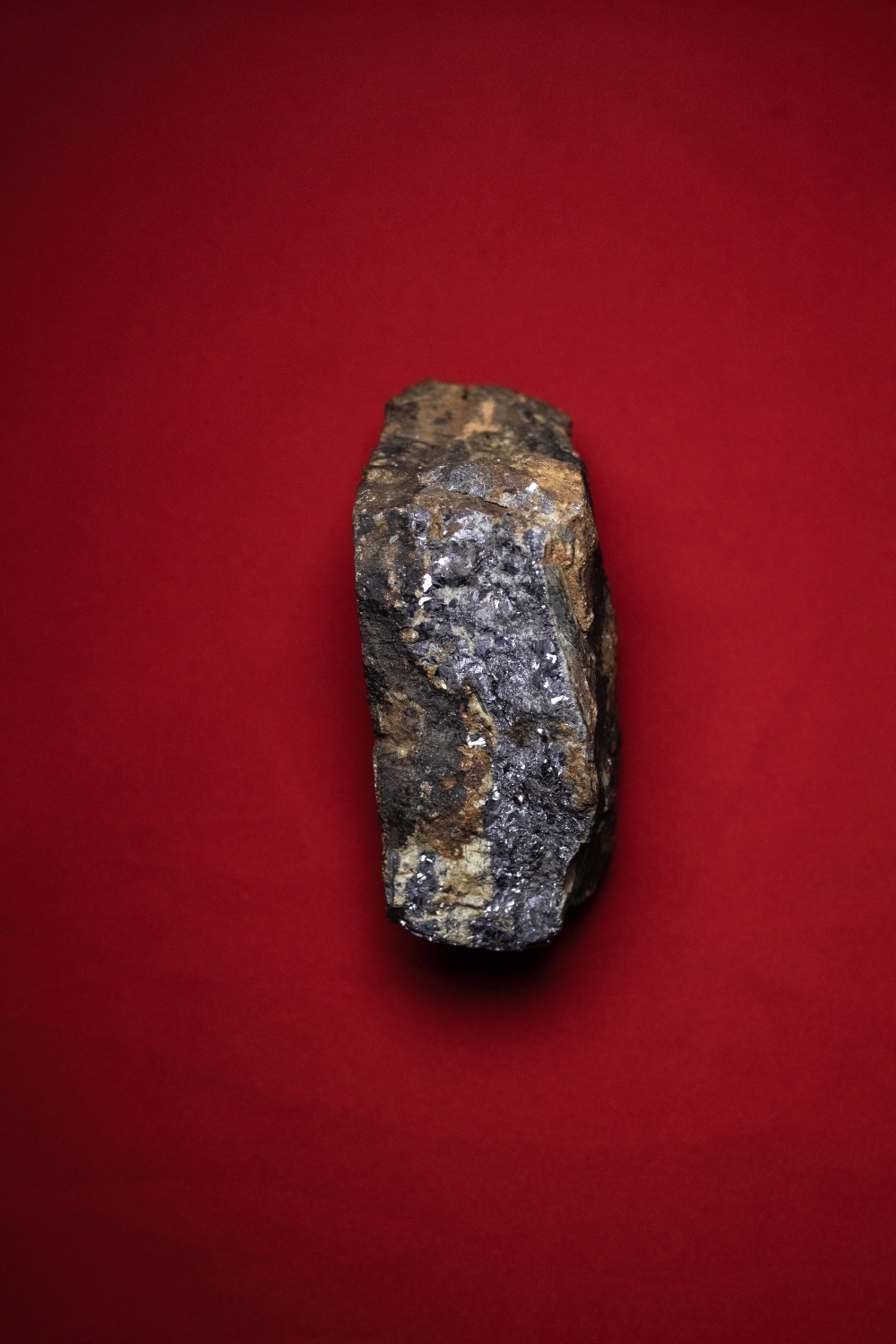

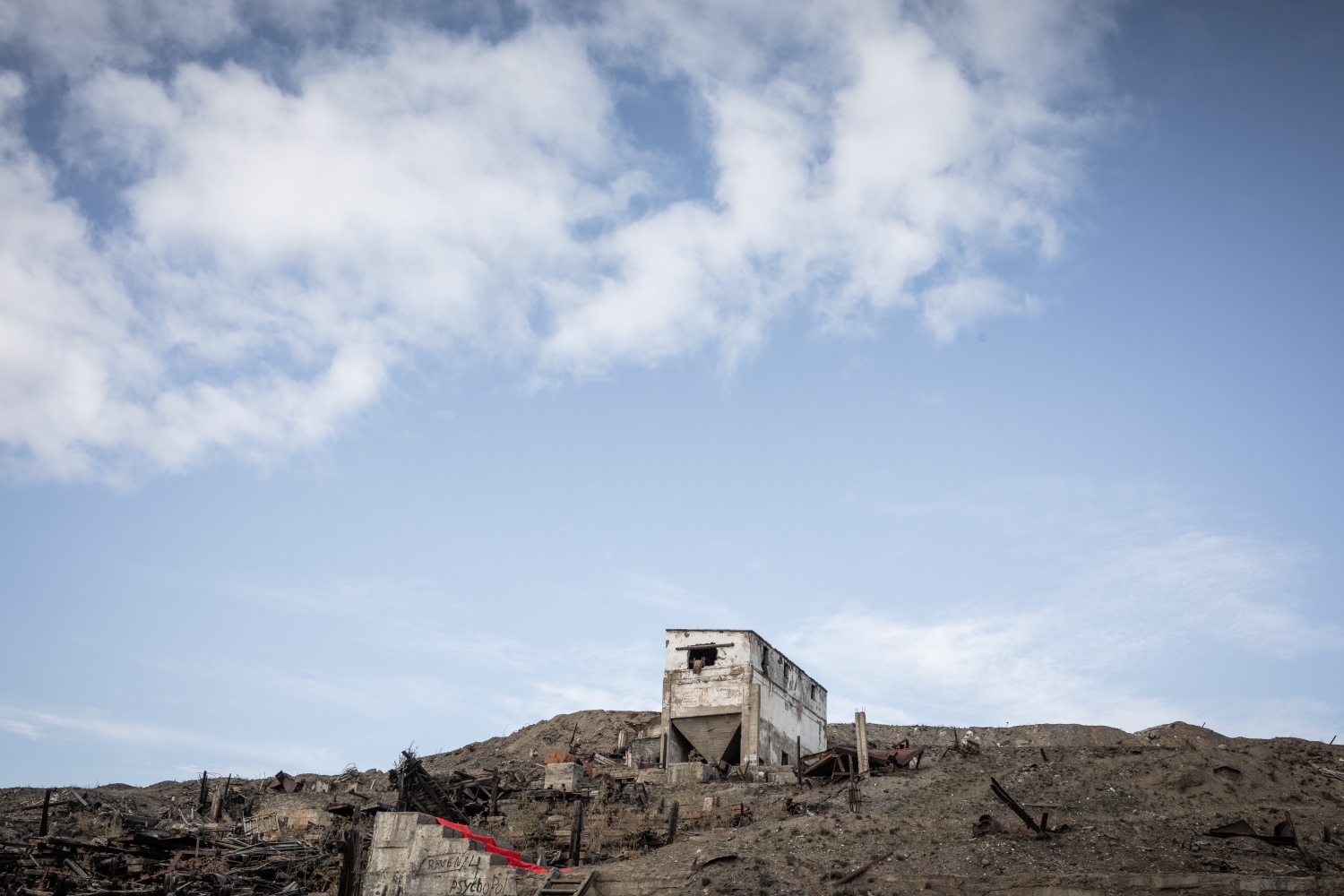



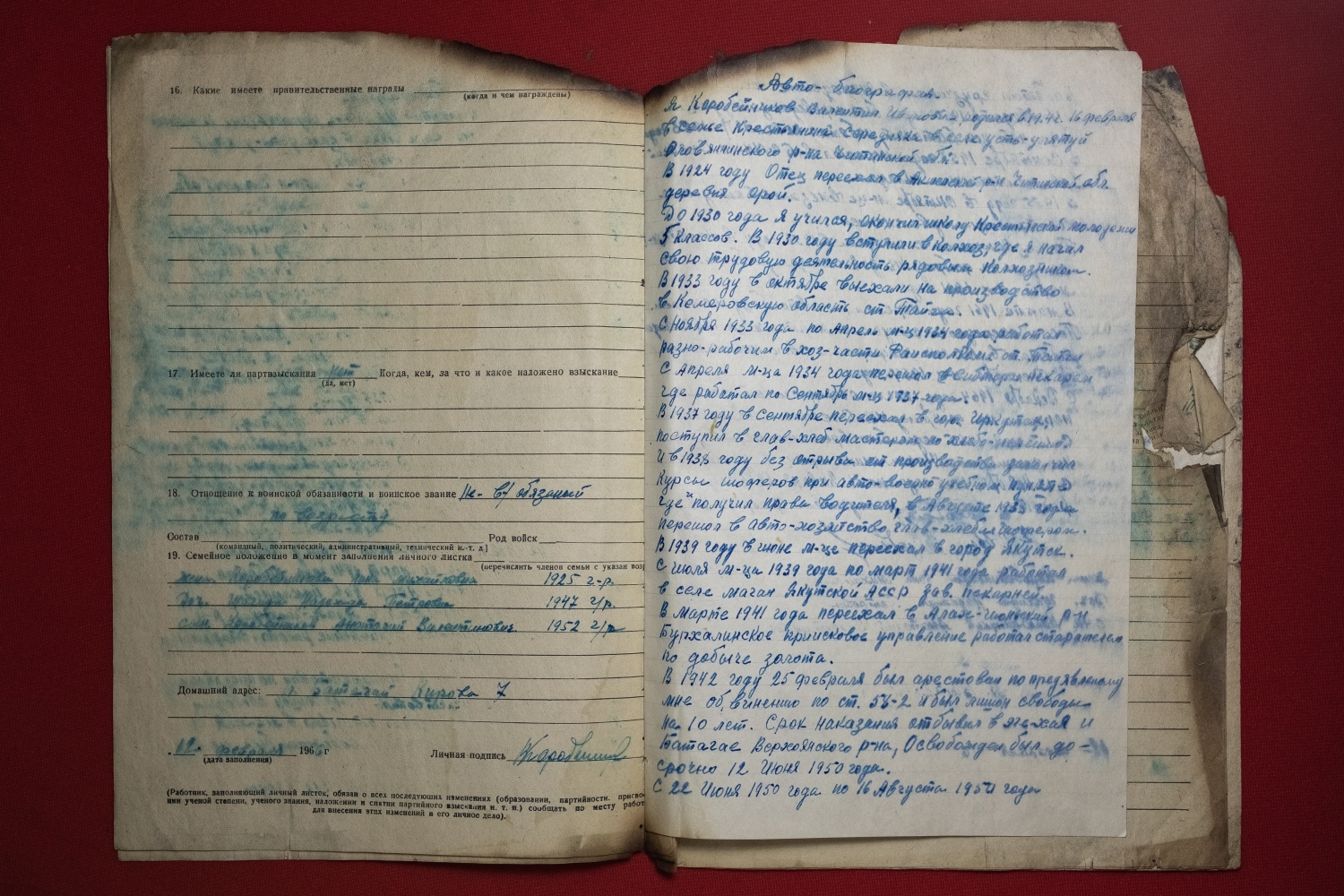
Photos upper left and right, translation
Resume
I, Korobejnikov Valentin Ivanovich was born in 1914 in Chita, village Usty-Ulyatui in a peasant family. My father is Korobejnikov Ivan Ivanovich and my mother is Korobejnikov Lyubov Savelyevna. My parents ran a cattle farm before the revolution. After the revolution they were farming. In 1930 my father and mother joined a collective farm.
From the age of 10, in 1924, until 1930 I went to school. After that I started my working life and worked in a collective farm.
In 1933 our family moved to the village of Tajga, Kemerovo oblast. There I worked as a baker in a bakery until 1937. I quit and moved to Irkutsk. There I found employment as a baker at the GlawKhleb Kombinat and worked there until May 1939. I resigned and moved to Yakutsk. There I worked as a baker until March 1941. From March 1941 I was in gold mining settlement Burhala, Allach-Jun region, and worked there as a miner until February 1942. On 25.02.1942 I was arrested by the NKVD and transferred to the Yakutsk prison. I was there until 30.04.1943. Charged according to paragraph 58 II and sentenced to 10 years of imprisonment.
In March 1943 I was transferred to the Yansk Mining and Industrial Administration. There I served my sentence. On 23.06.1950 I was released early. On 23.06.1950 I received work in the Yansk administration as a loader. I worked there until 15.08.1950. With my consent I was assigned to bakery No.2, Batagai settlement, Yansk Administration until 20.10.1953. After that I got the job as a warehouse manager of Batagai construction office. I worked there until 01.10.1955. After that I got an indefinite leave and was on the road in the central regions of the country until 04.03.1956.
02.03.1956, signature

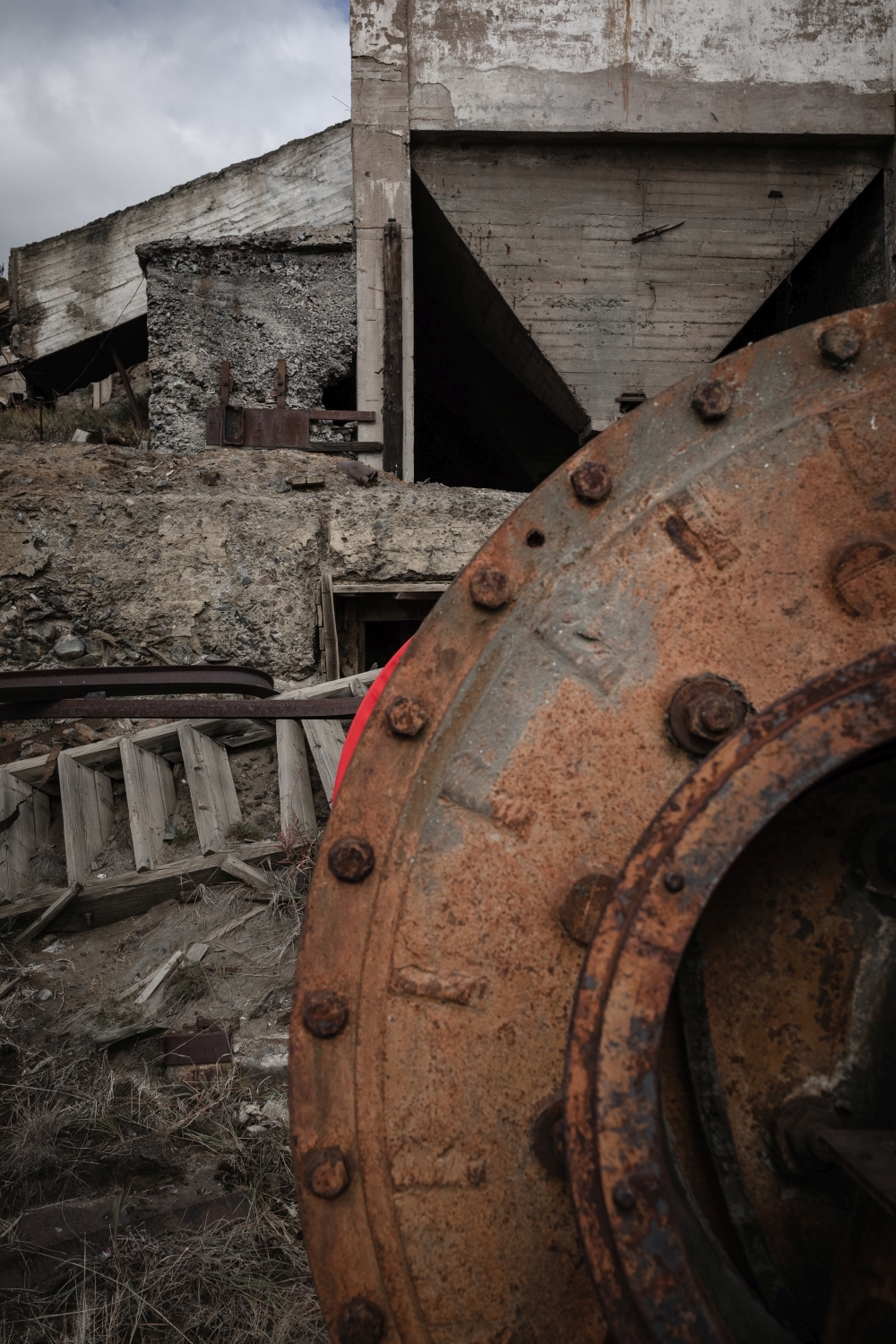
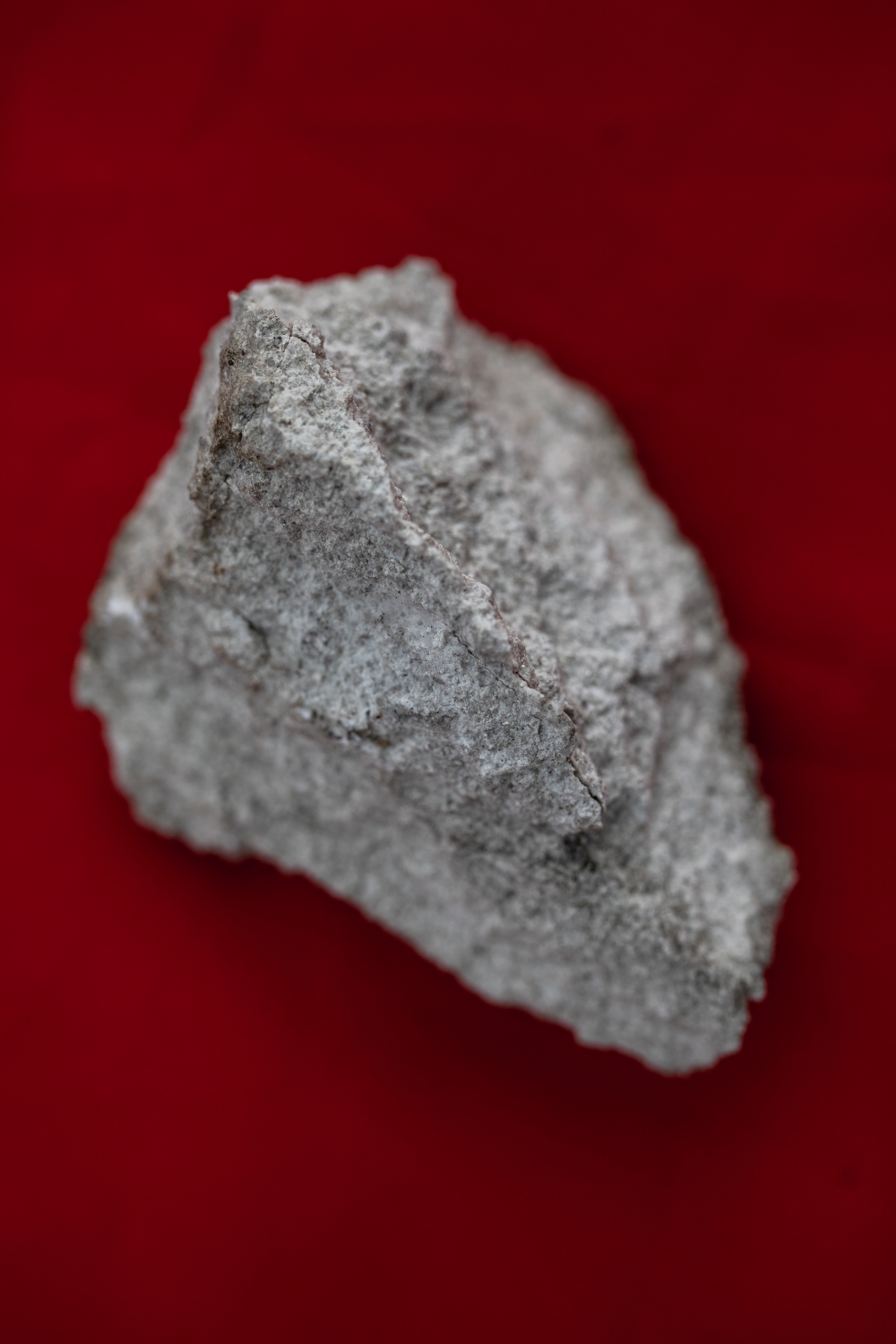
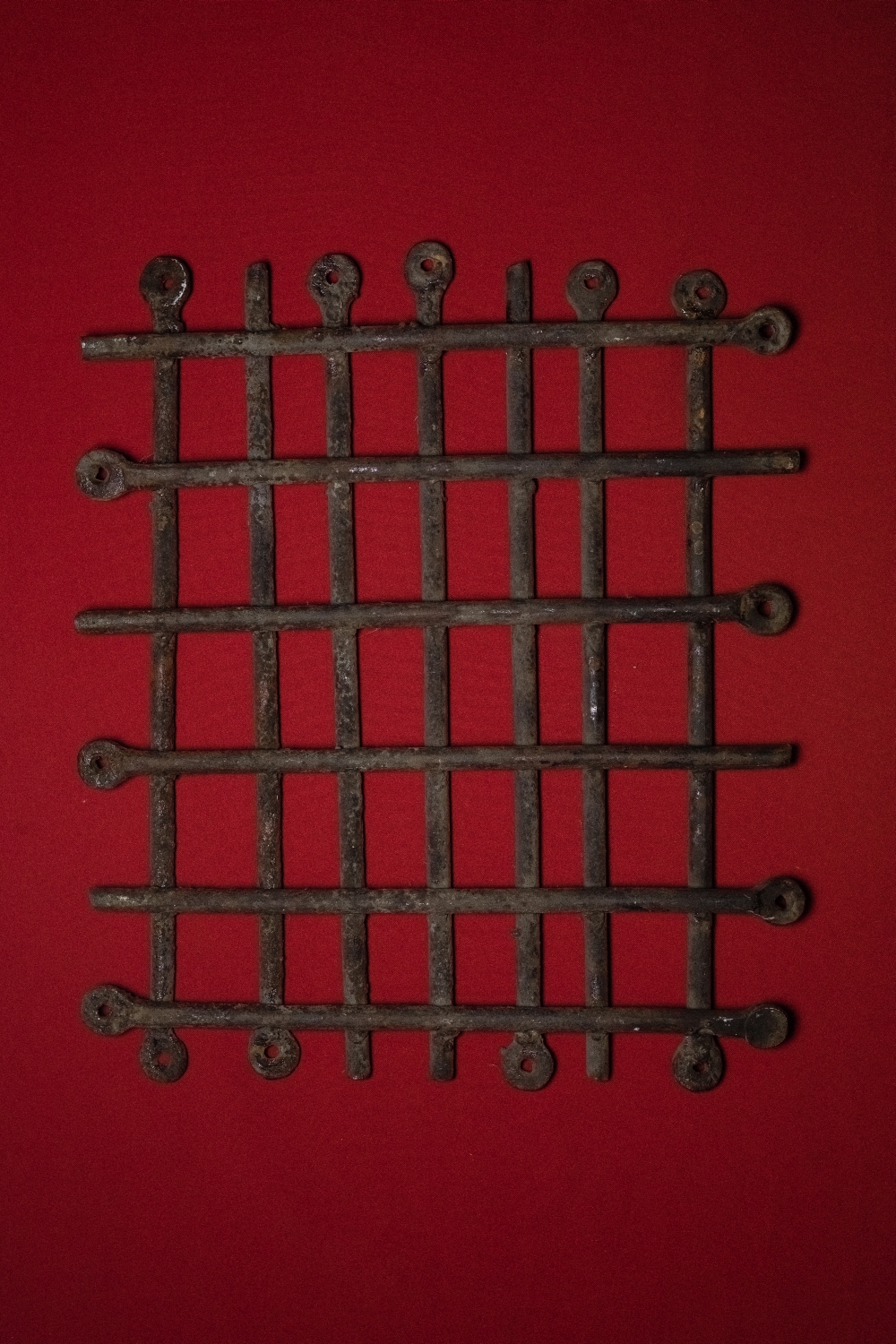



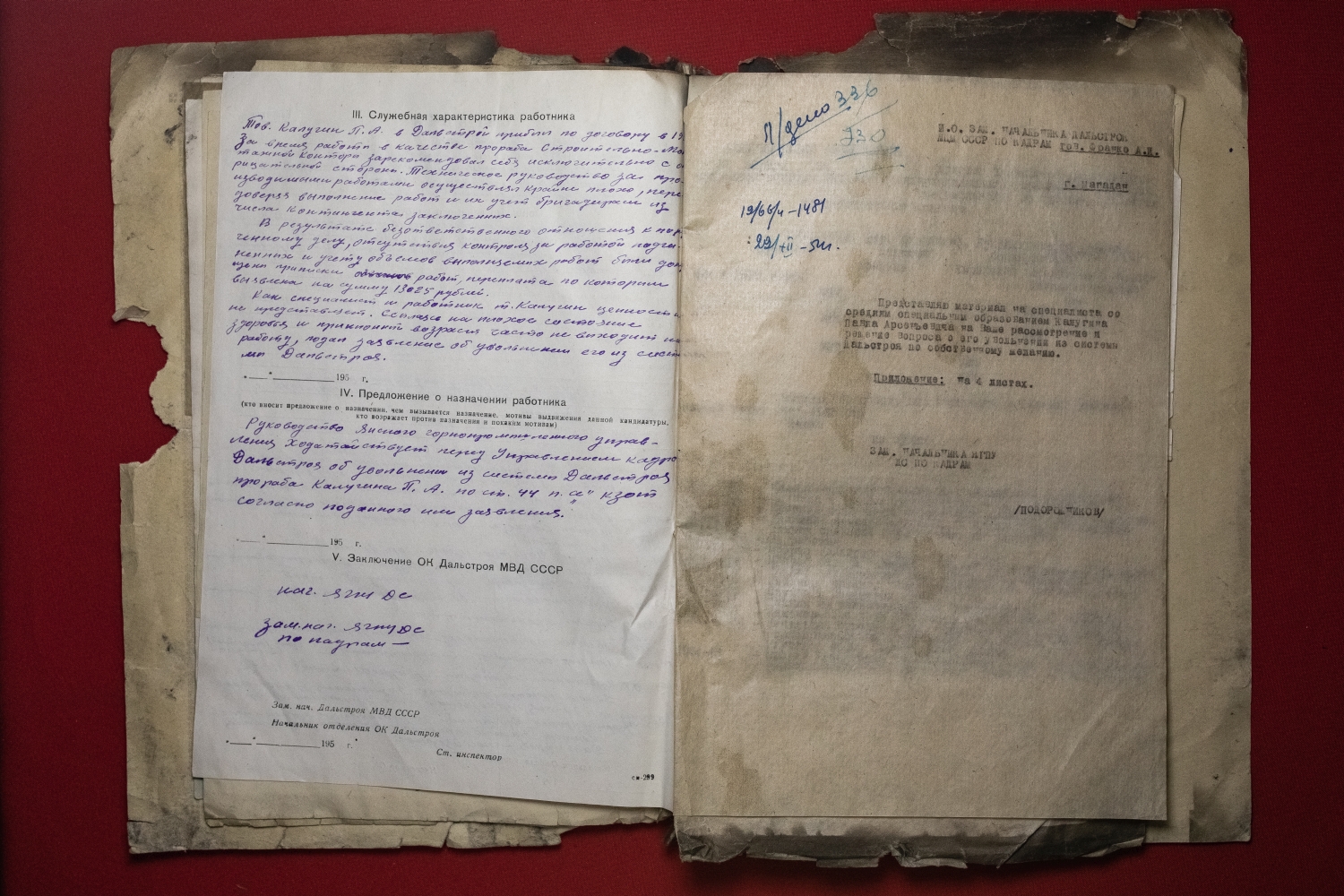

Photo upper left, translation
Head Office of Construction of the Far North NKVD USSR
Questionnaire
Rtov Grigory Nikanorovich
| Q U E S T I O N | A N S W E R |
| 1. Year and place of birth (oblast, region, district, city, village, settlement) | 1902, Cossack settlement Kopanovskaya, Vashotayevsky district, Stalingrad region |
| 2. Nationality, native language | russian |
| 3. Social status (worker, peasant, middle peasant, kulake, citizen, nobleman, merchant) | Worker |
| 4. Party membership (member or candidate of WKP(B), WLKSM (Komsomol), indicate entry time and number of membership card). | no |
| 5. Did you have membership in the WKP or other parties, when, what were the reasons for leaving? | Member of WKPB from 1925 to 1936, resigned due to conviction |
| 6. Are you a member of the union, period, date of joining, number Membership card | from 1917 until today No 044846 |
| 7. Citizenship | Citizen of the USSR |
| 8. School graduation a) general b) vocational education / specialization (where / when / diploma) c) further education / specialized courses, where / when d) political education | a) yes b) Military training. College of riflemen, city of Tashkent 1925 d) Communist University, Gorky city |
| 9. Main profession | Planner |
| 10. Knowledge of foreign languages except Russian | none |
| 11. Criminal prosecution. If yes, indicate where / when / article and paragraph of conviction / date of release / disenfranchisement. | Yes. In 1936 I was sentenced by article 143-17. 5 years of imprisonment until 1941. Sentenced by the Military Tribunal, Yakutsk. |

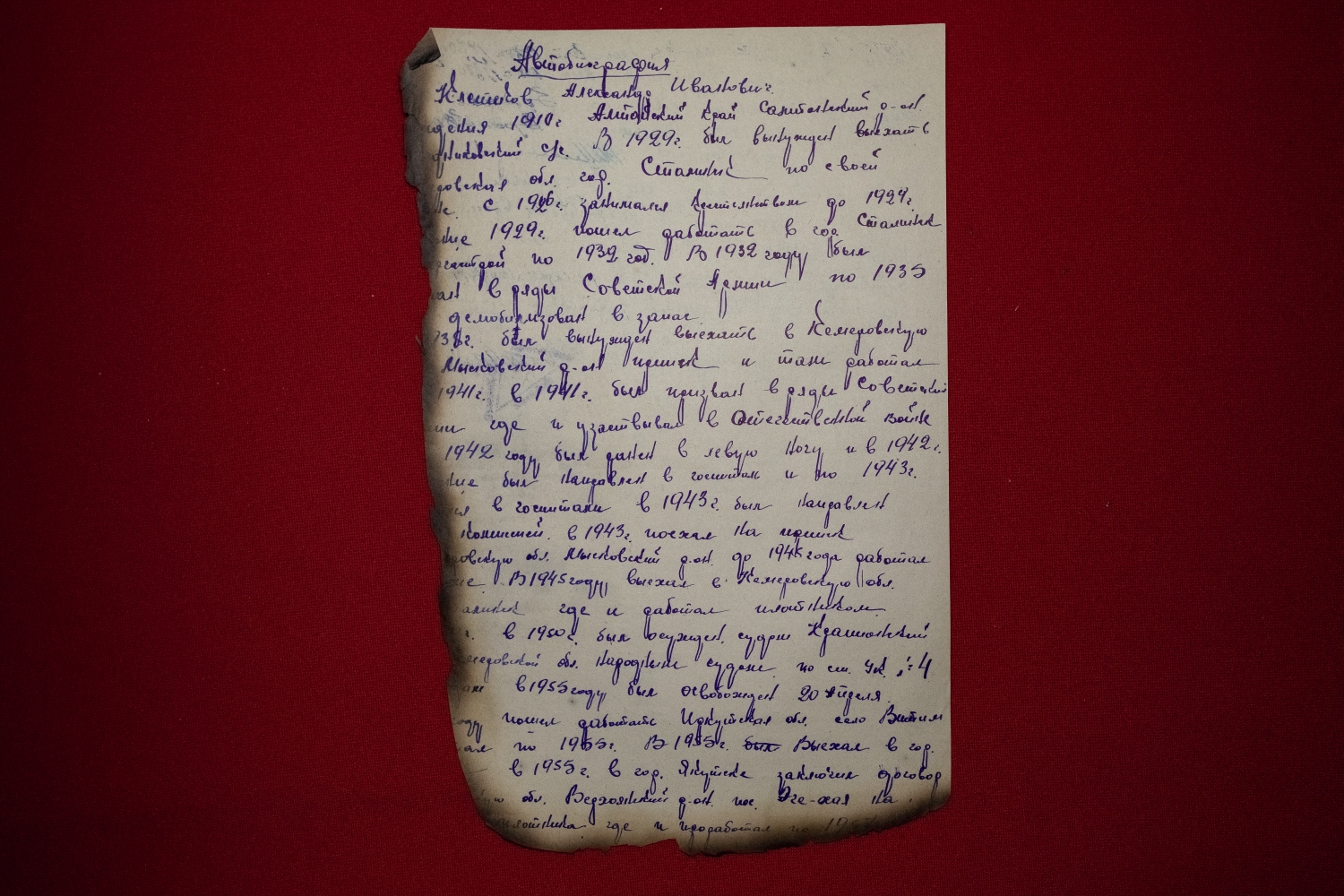
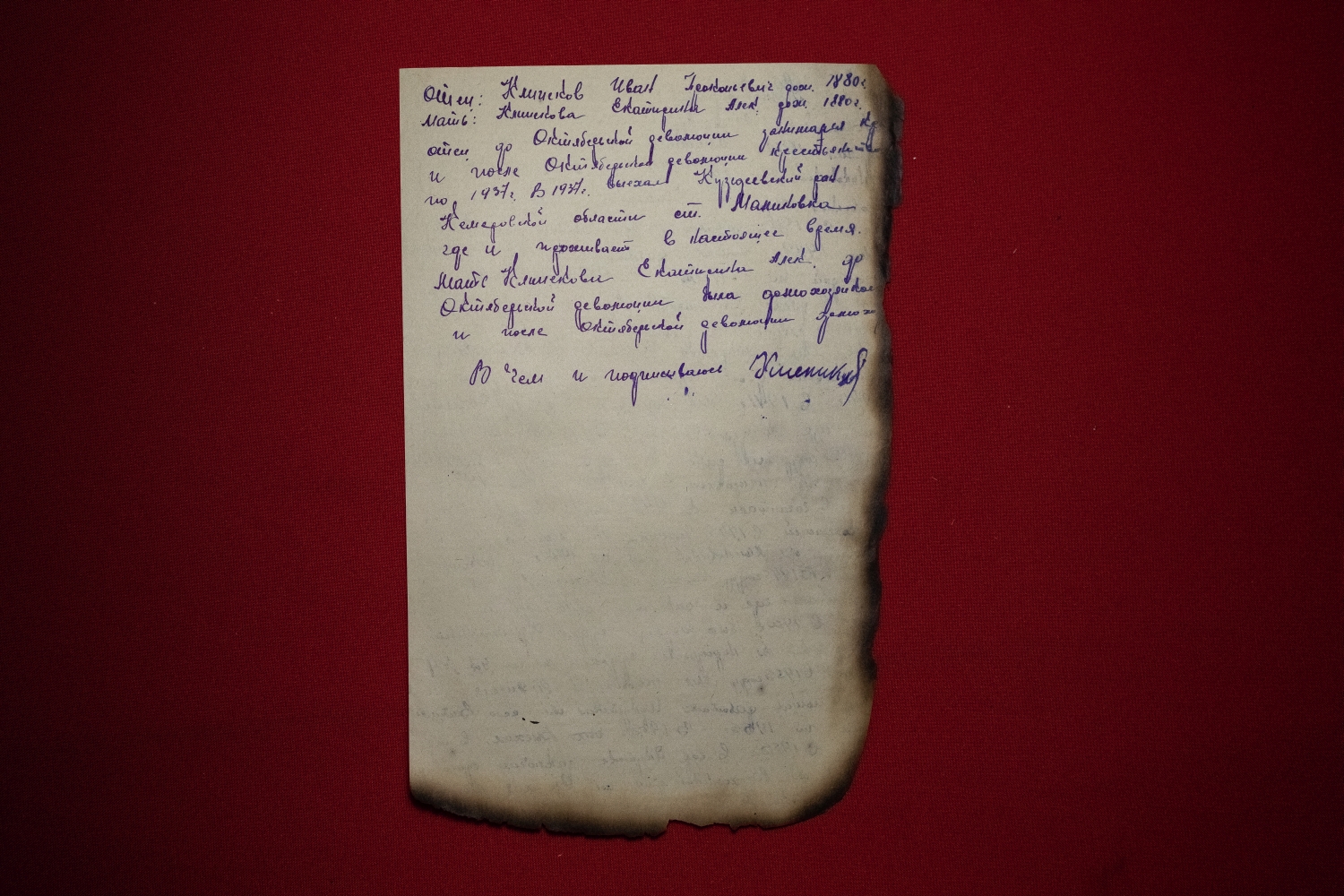
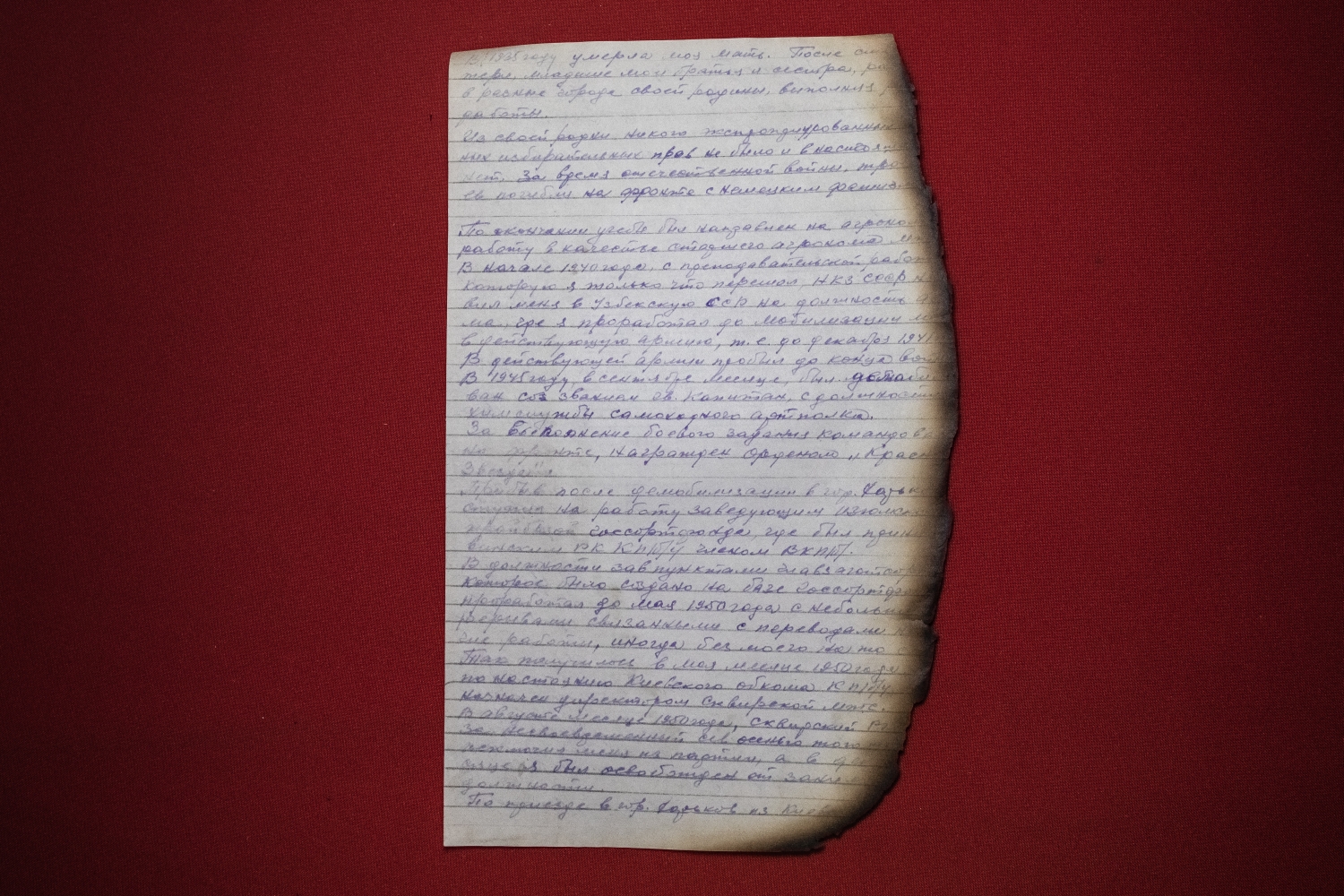

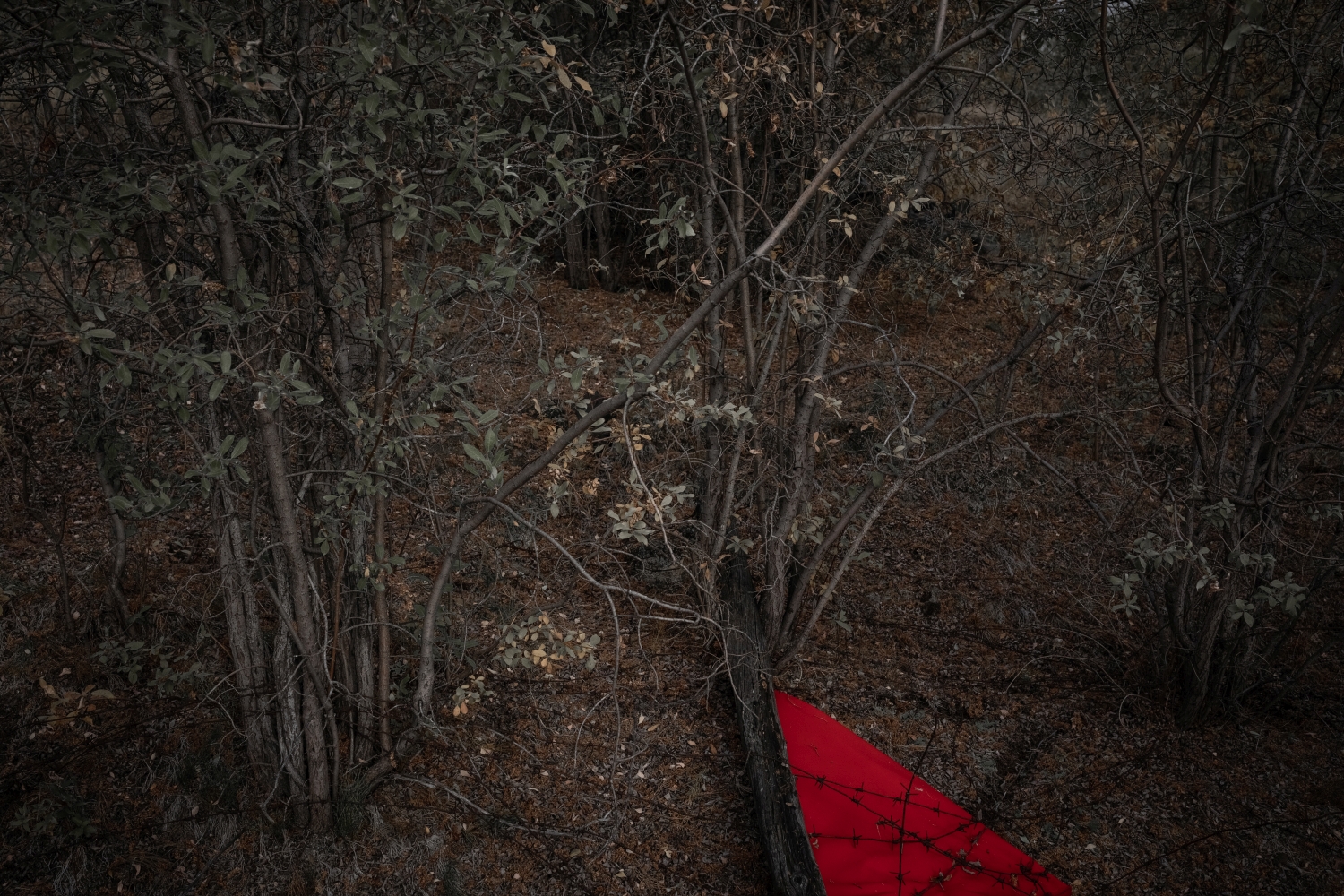




Photo upper left, translation
Resume
I, Karnauchov Nikolay Grigoryevich, was born in 1915 in Chita. Between 1932 and 1935 I finished an engineering school. From 1935 to 1936 I worked in WeTscheKa. From 1936 to 1938 I worked in the transport administration.
On 01.04.1938 I was arrested on the basis of sections 111-16-18 of the Criminal Code and 27-7-38. By the order of the Yakutsk People’s Court I was sentenced to four years’ imprisonment in the Esse-Khaiya camp.
On 24.11.1941 I was released from the forced labor camp.
April 20, 1942, signature


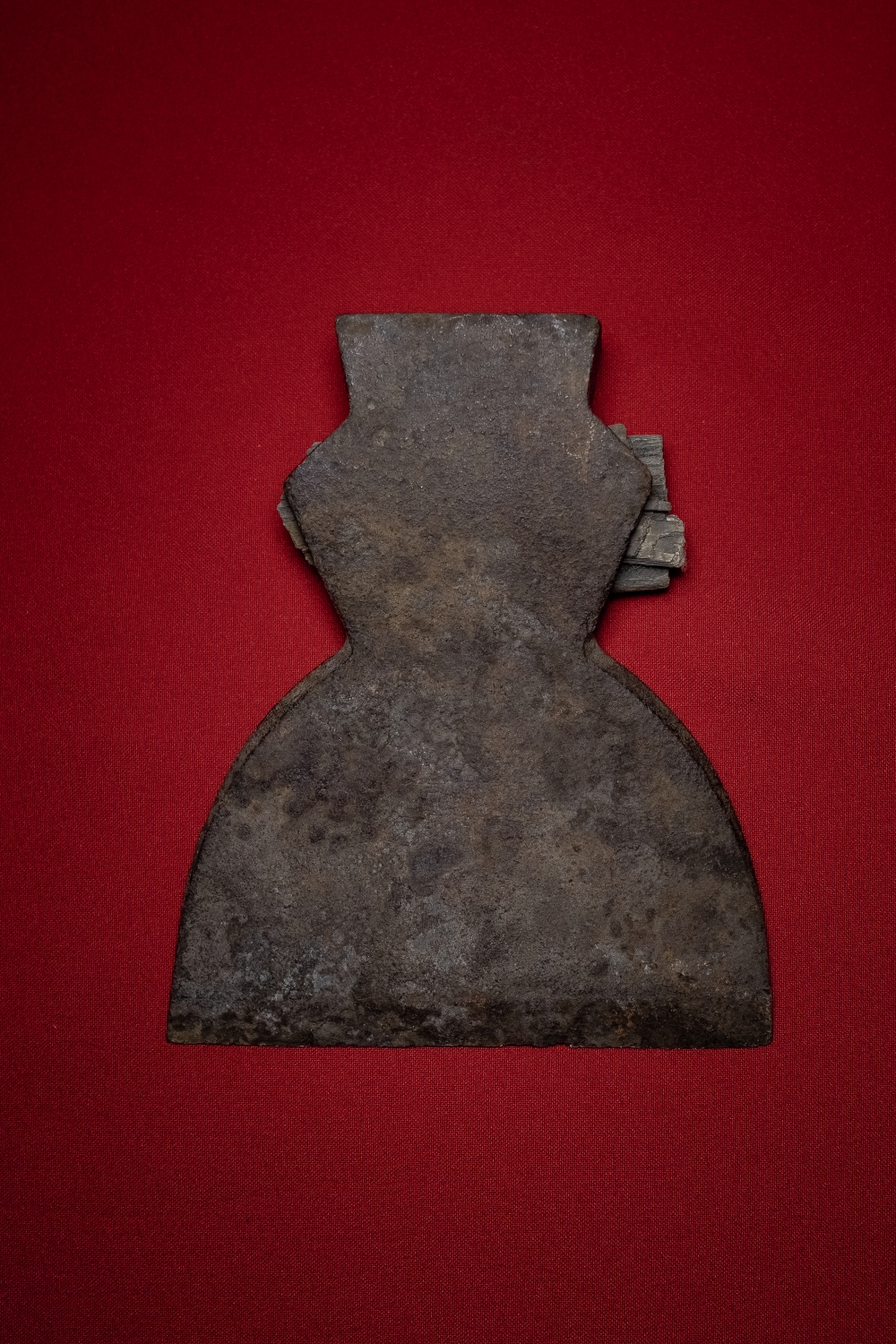
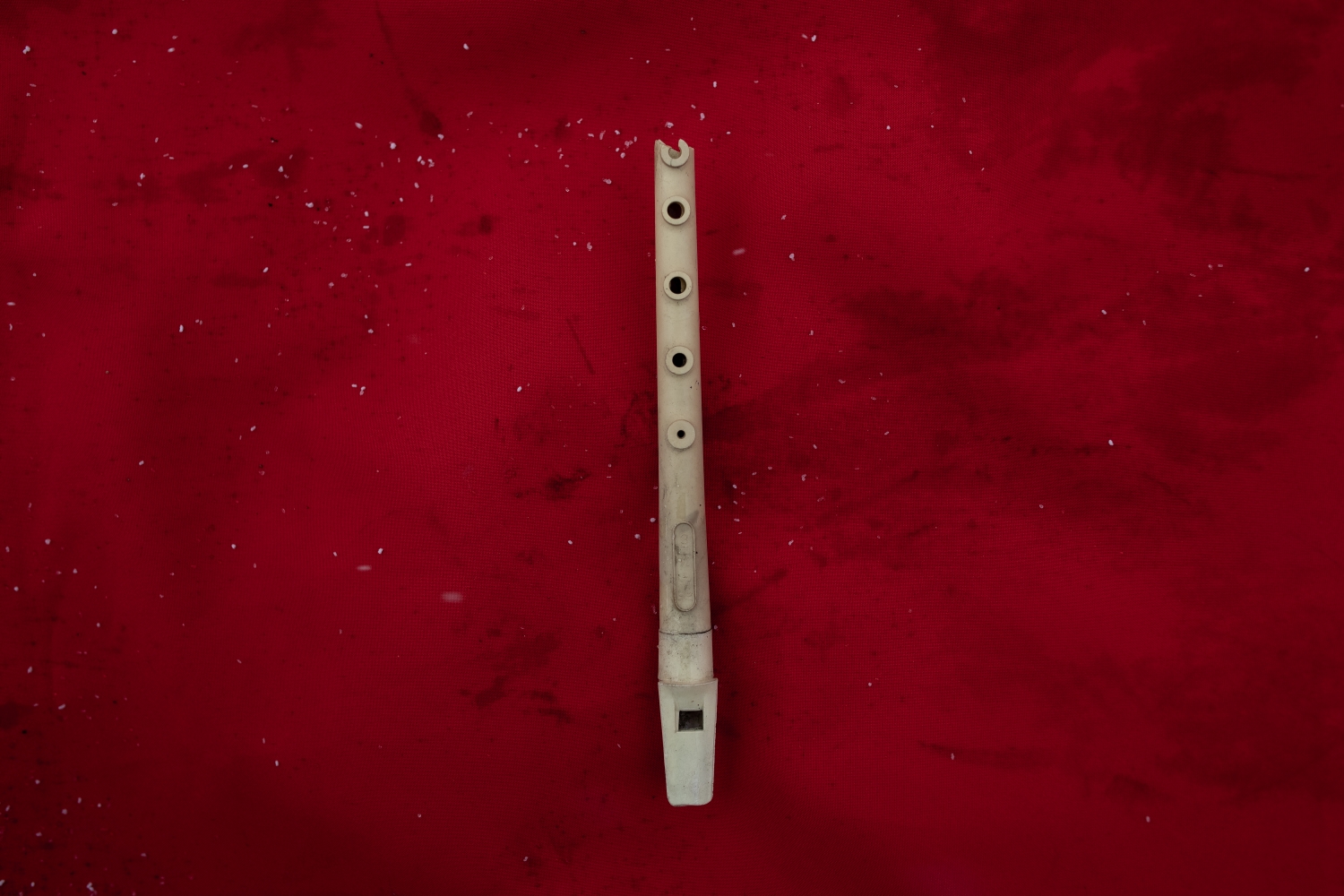




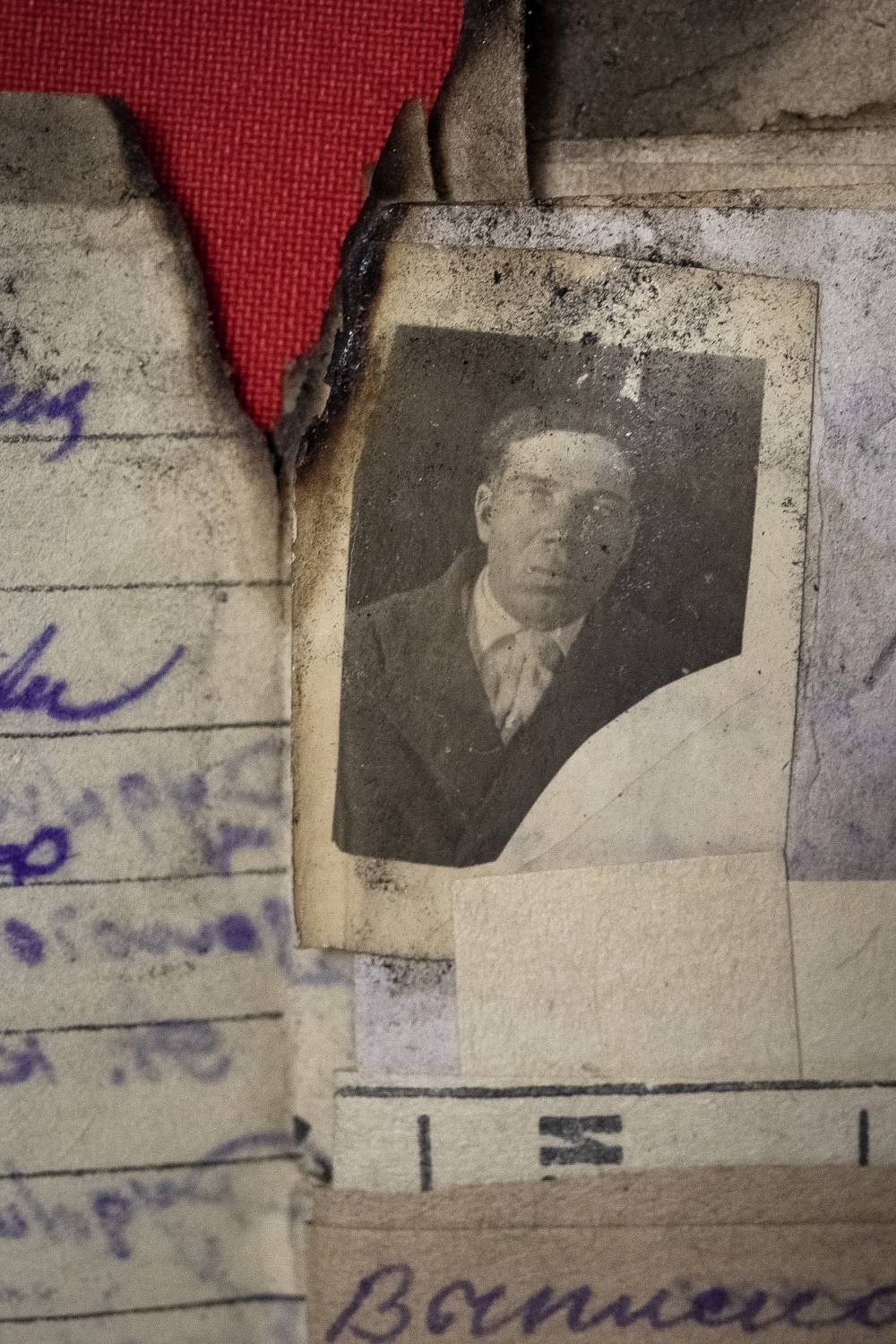

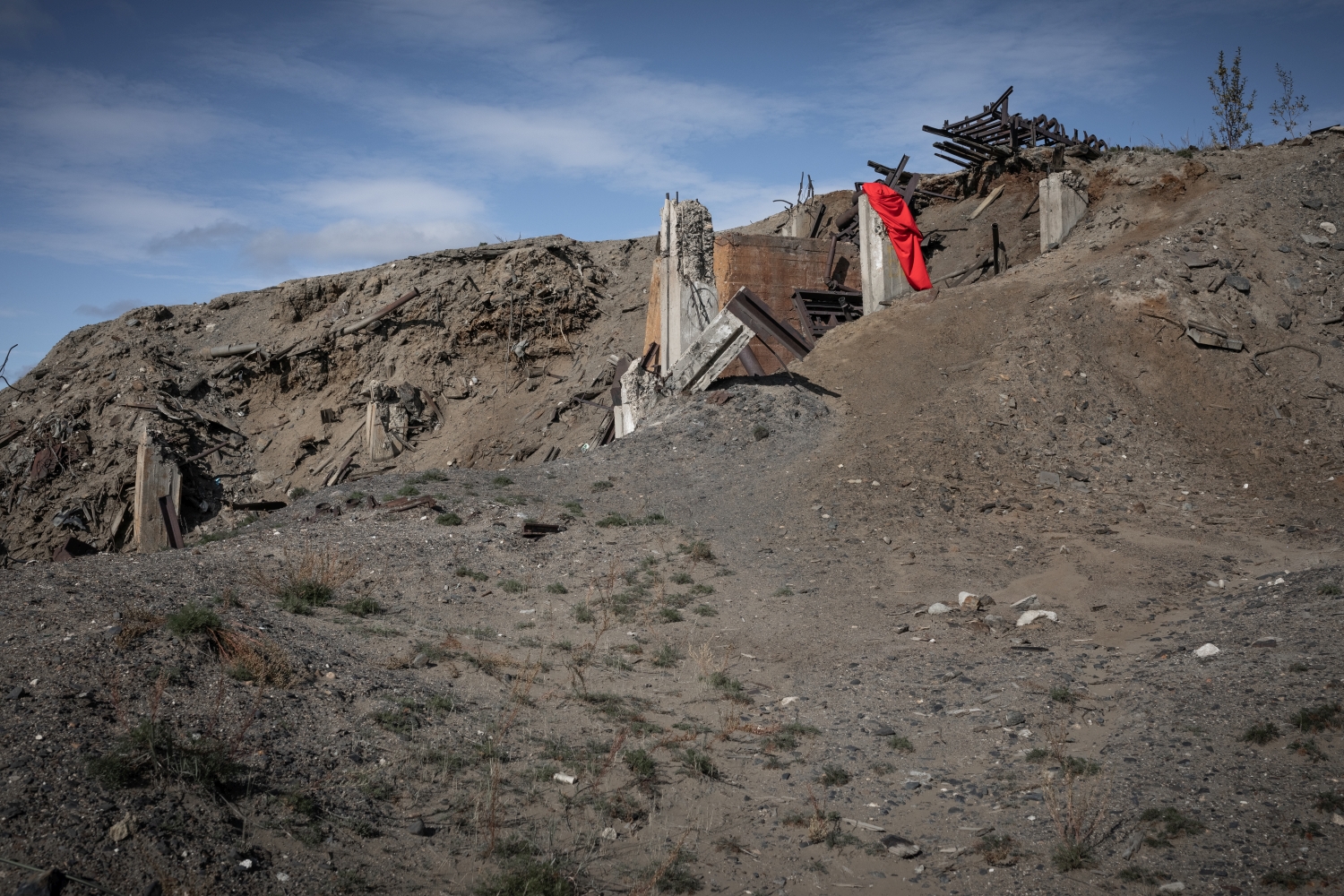

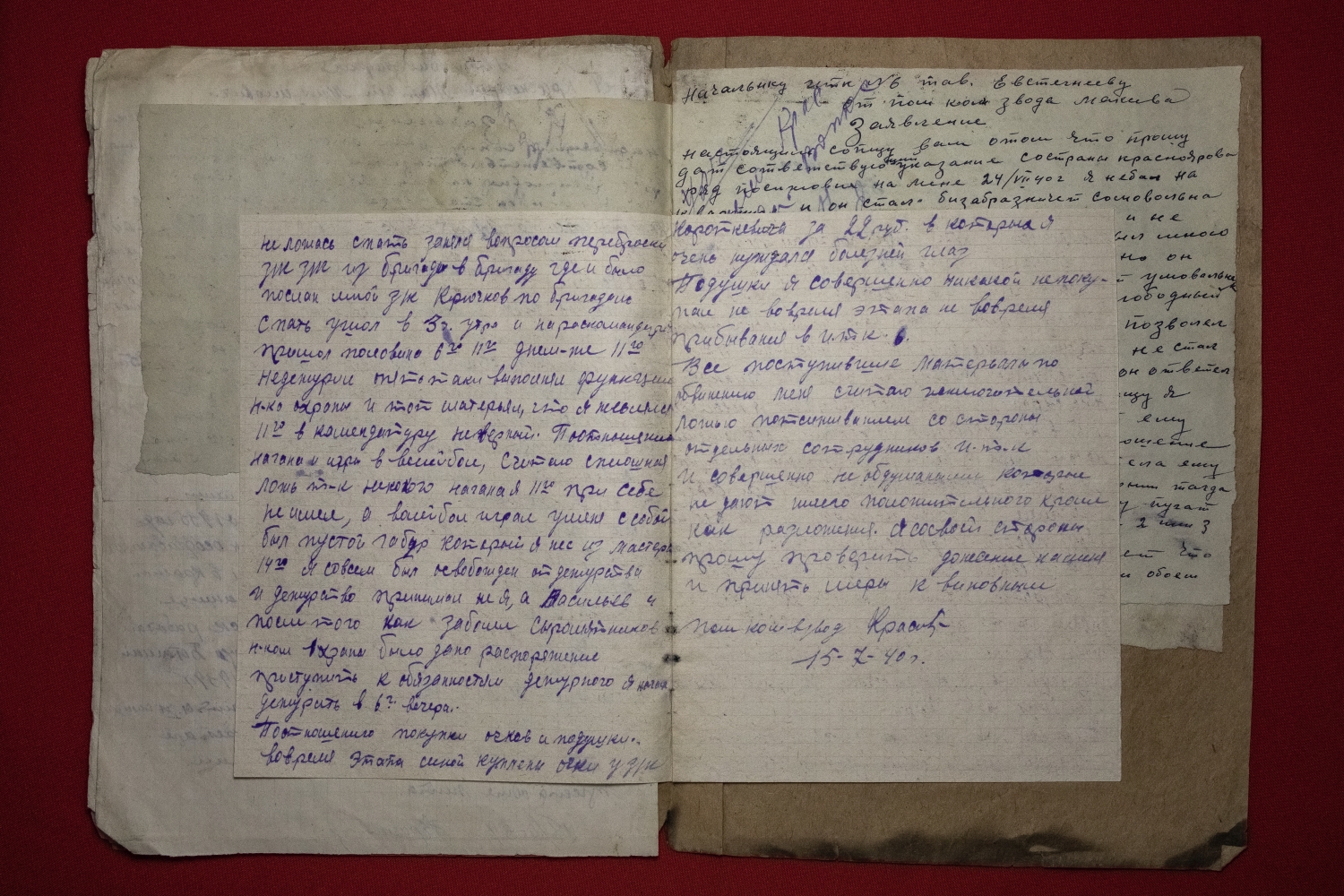


Photo upper left, translation
Resume
I was born in 1893 in Voronezh oblast, Novo-Khapyorsk station, in a peasant family. My parents were farming before and after the revolution. From the year 1902 I went to school for three years and finished school. When I was 14 years old, I found a job in my hometown and helped my parents. Later I went to another place in Ryazansko-Uralskaya oblast, (railroad station illegible). In 1913 I got married and found another job. In 1920, while living at Novo-Khapyorsk station, I became a member of the Communist Party of the Soviet Union (CPSU). In 1929 I was dismissed from the CPSU because of a binge.
In 1922 I was mobilized to the Red Army (6 months – guarding a crossing). From 1918 to 1939 I worked at the railroad (guarding various railroad crossings). From 1939 to 1941 I worked in Borissoglebsk, Voronezh Oblast, in a gold mine. After the expiration of the temporary employment contract, I went to Yakutsk. I applied for a job in the mine to the NKVD and worked there as a miner until 05.09.1944. I was dismissed from the mine “Burgawin” by order of the NKVD.
Extract from the administrative order
29.09.1944, settlement Esse-Chaija. Kripshin Semeon Yakovlevich is assigned as a miner with flat wages on 27.09.1944. Head (signature): Supervisor of “Burgavin” mine, Ickovich.

Evgeniya Zhulanova (Moscow, RU)
Photographer, photojournalist, storyteller
2014-2015, FotoDepartament Institute Moscow, documentary photography
2015-2018, Rodchenko Art School Moscow, documentary photography
Evgeniya arbeitet mit Museen und russischen Menschenrechtsorganisationen, wie Memorial International und dem Sacharow-Zentrum zusammen. Ihre Arbeiten wurden unter anderem hier publiziert: takiedela.ru – the-village.ru – lenta.ru – meduza.io – Русский репортер – Кот Шредингера – fotodoc.center – birdinflight.com – rbth.com


Sponsored by the Federal Government Commissioner for Culture and the Media


